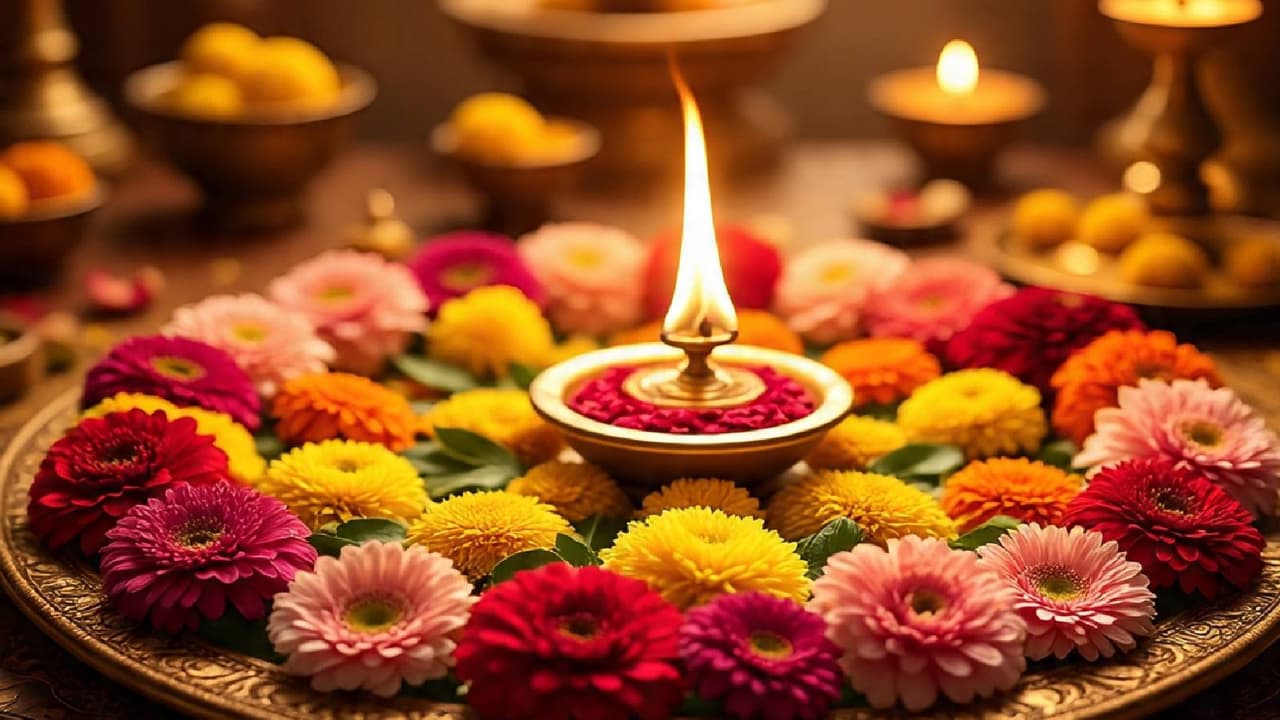Flowers offered in puja are considered sacred and not ordinary. Throwing them in the dustbin is considered wrong from the religious point of view. The best way to destroy withered flowers is to immerse them in a holy river, mixed with soil/compost.
Rules for Pooja Flowers: Offering flowers during puja in temples and homes is an age-old religious tradition. These flowers not only reflect our devotion towards God but also fill the place of worship with positive energy. However, when these flowers fade, it is time to destroy them. Do you also throw these flowers in the dustbin? If yes, then you need to change your habit, because according to religious beliefs, doing so is an insult to the gods. Let us learn how to immerse these withered flowers in the right way so that their positive energy remains and we attain virtue.
Why not throw them in the dustbin?
According to religious scriptures and beliefs, flowers offered to God are imbued with God’s touch and positive energy. These flowers are not ordinary, but become sacred like ‘Prasad’.
Disrespect: Throwing these sacred flowers in the general dustbin or keeping them in unclean places is considered a grave disrespect to the gods.
Negativity: Doing this may destroy the results of the puja and may bring negative energy into the house or temple.
3 sacred ways to dispose of withered flowers
Withered puja flowers should be immersed in such a way that they return to nature and their purity is maintained.
Immersion in holy rivers or running water (correct way)
- This is the best and traditional way to dispose of old flowers.
- What to do: Withered flowers should be immersed respectfully in a holy river (like Ganga, Yamuna), pure flowing water (like a canal, pond or a big lake).
- Religious significance: It is believed that by immersing these flowers in water, these flowers return to the feet of nature and they are not disrespected.
gardening and composting
- If there is no holy river or clean running water nearby, this method of gardening is best for the environment as well.
- Composting: Flowers should be mixed directly into soil or home gardening compost.
- Reuse: This method prevents the flowers from becoming impure and turns them into compost, returning them to the service of nature. This nutrient-rich fertilizer is like nectar for your plants.
- Use: It is also considered appropriate to bury them in the soil of a pot or at a holy place.
Immersion in the roots of sacred trees
- Some trees and plants are considered very sacred from religious point of view. You can also immerse flowers below them.
- Sacred places: These flowers can be immersed respectfully in the roots of religiously revered trees, such as Peepal, Banyan or Tulsi plants.
- Significance: According to belief, these trees are considered to be the abode of the gods, hence their roots become a sacred place for the immersion of flowers.
Also read- The year 2026 is very inauspicious for these 5 zodiac signs, know which zodiac signs are included
Why is it wrong to throw dried puja flowers in the dustbin?
Since these flowers become sacred by touching God, it is considered disrespectful to throw them in the ordinary dustbin.
How to immerse puja flowers properly?
It is considered appropriate to immerse them in a holy river or flowing water, mix them in manure or keep them in the roots of sacred trees.
Can compost be made from puja flowers?
Yes, it is good for the environment and is also considered appropriate from religious point of view.
It is auspicious to immerse flowers in the roots of which trees?
The roots of Peepal, Banyan and Tulsi plants are considered the most sacred.
Also read- Utpanna Ekadashi 2025: Know how and when to celebrate Ekadashi
Is it safe to bury dried flowers in soil at home?
Yes, this is the right and holy way; Nature also benefits from this.
Disclaimer: The information contained in this article has been taken from religious texts, scholars and astrologers. We are just a medium to deliver this information to you. Users should consider this information as information only.
